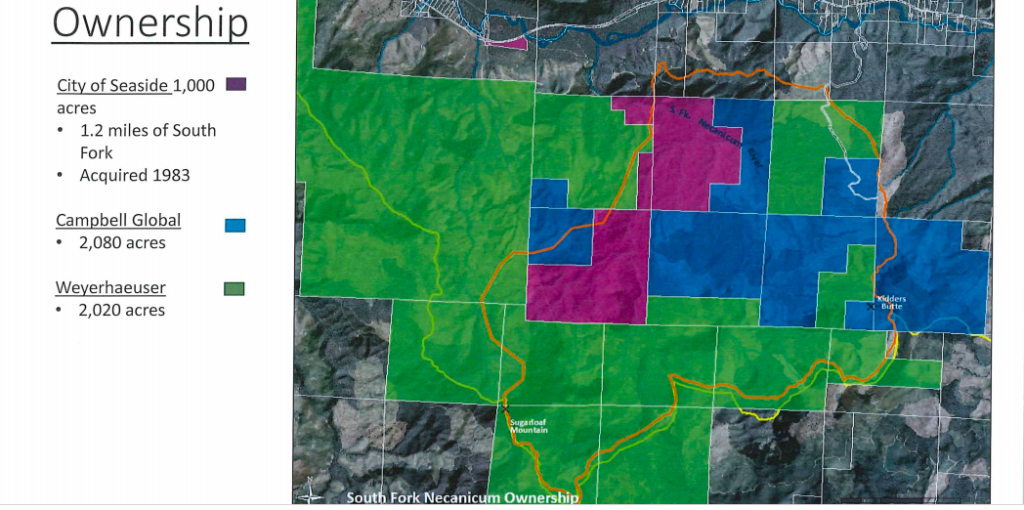Protecting water at the source
Published 12:20 pm Tuesday, September 25, 2018

- Map shows ownership of Seaside's watershed property.
Consider it a “living document,” said Seaside’s Public Works Director Dale McDowell at Monday night’s City Council meeting.
McDowell presented the city’s 2018 Watershed Management Plan for council approval, a document that includes strategies for source water protection and timber management.
The plan provides a framework for management of city-owned land in the watershed.
“This provides us with a starting point as to where we stand as far as the watershed is concerned,” City Manager Mark Winstanley said.
Near the South Fork Necanicum River intake of the Seaside Water Department, Seaside’s nearly 1,000 acres comprise about 18 percent of the watershed’s 5,200 acres, the rest of which is in private ownership.
The plan, last updated in 2004 and delivered to the council in July, “provides a good framework for management decisions that Seaside owns in the Necanicum drinking water source areas,” wrote the Department of Environmental Quality in a draft plan review. The plan is designed to inventory possible points of contamination and identify threats.
The city and the Necanicum Watershed Council applied for and received $30,000 from Infrastructure Financing Authority to develop the new Watershed Management Plan. With unanimous approval of the final draft, the city meets the October deadline to submit to the state Department of Environmental Quality to fulfill terms of the grant.
The plan could lead to decisions about harvesting timber to raise revenue for the city. According to the document, today much of the forest is stocked with mature trees suitable for final harvest.
Councilor Tita Montero asked for an annual review of the plan. “How do we make sure we review this on a regular basis for the additions and changes?”
Councilor Tom Horning said that the next step in the process should be a public dialogue where the public can talk about the goals and evaluations of non-economic resources in the watershed and how they are managed. “I would recommend that we approve this with the understanding that we follow up with this management proposal,” Horning said.
“It’s always a living document,” McDowell said. “It changes, climate changes, property owners change, and our acquisition of additional property is likely to change.”
Next steps include a flora and fauna study, McDowell said after the meeting.
“That will give us a better idea of what’s in the watershed,” he said. “We know what the trees are, we don’t know everything else. We may have some buffer areas because we have spotted owl, or marbled murrelet.
He added: “It’s trying to learn as much as we can about the watershed and share it with the public.”



